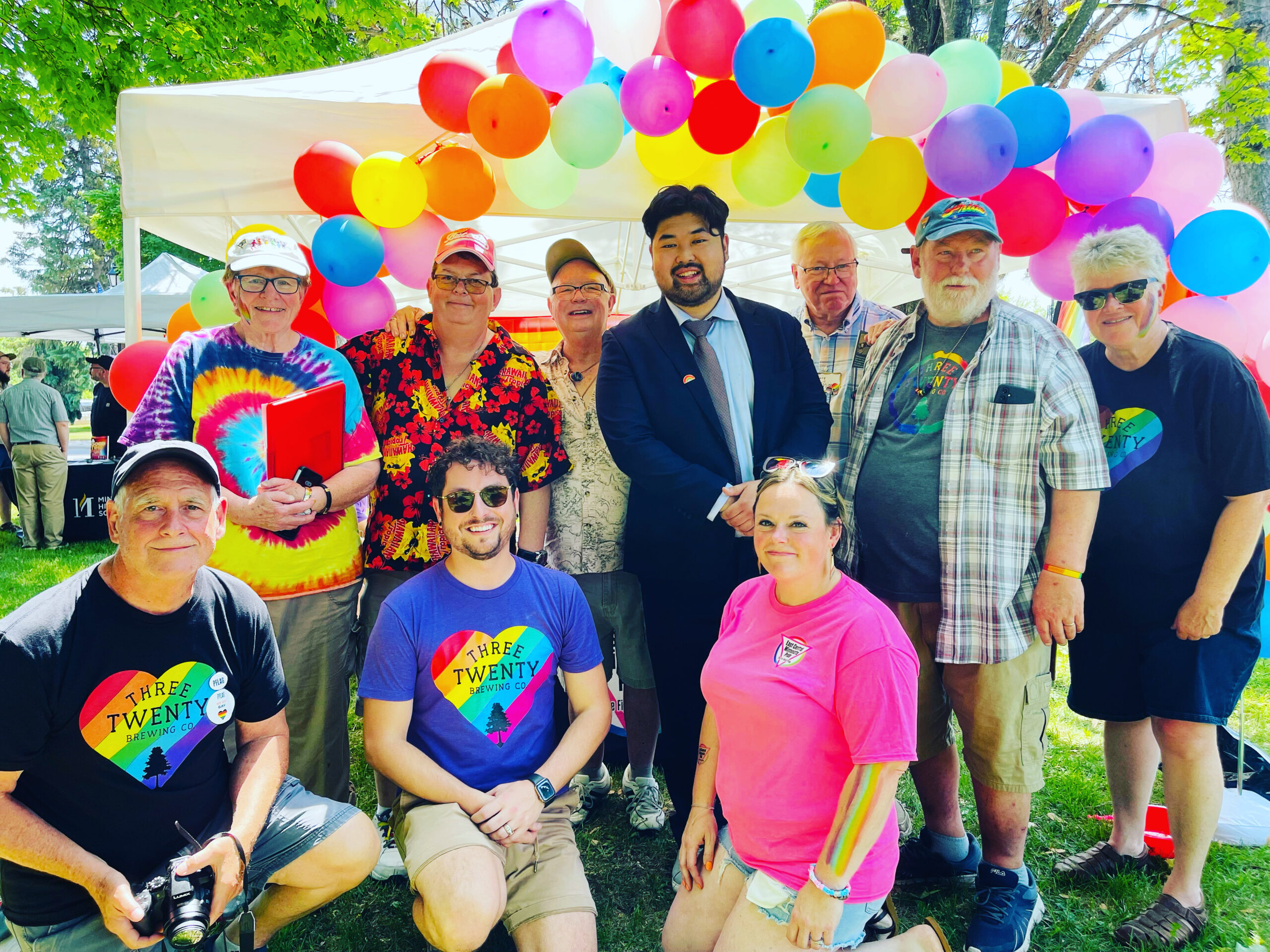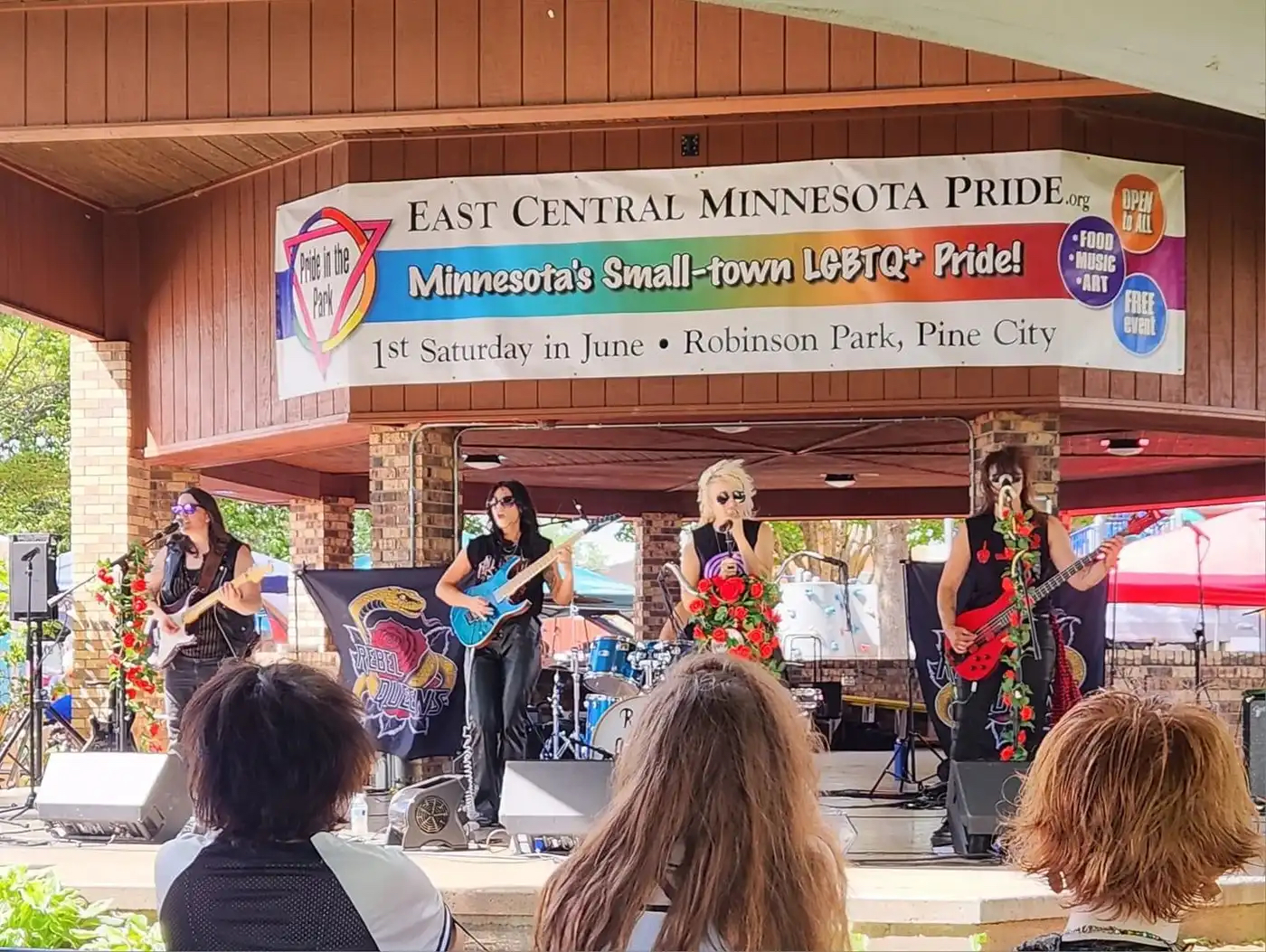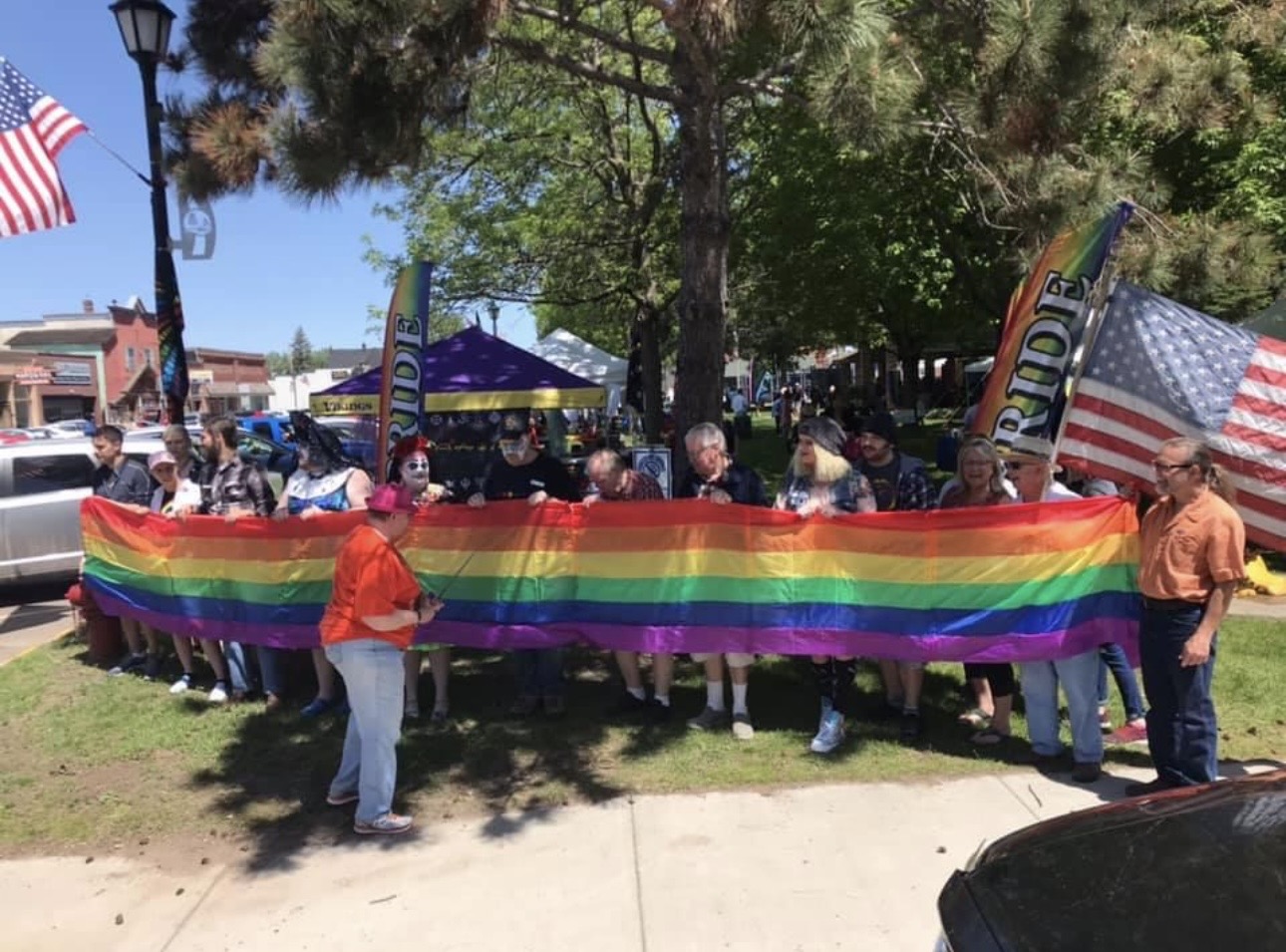East Central Minnesota is known for long winters, outdoor recreation, and being home to the first rural LGBTQ+ pride event in the world. What began as a support group in the late 1990s has blossomed into a robust regional celebration sponsored by nonprofit East Central Minnesota Pride (ECMP).
Pine City, Minnesota (pop. 3,130), is ground zero for ECMP festivities. Every first weekend in June, they welcome several hundred guests, numerous vendors, performers and sponsors to their annual Pride in the Park. The town, situated midway between the Twin Cities and Duluth, pulls attendees from eastern Minnesota and western Wisconsin.
The event was conceived by the East Central Men’s Circle, a support group for gay, bisexual and questioning men. They saw a need for a space to come together, socialize and support one another through similar life experiences. In 2005, the Circle partnered with local LGBTQ+ organizations the Purple Circle and PFLAG to host a casual picnic. Much to their surprise, nearly 100 people turned out. They’ve never looked back.
DON QUAINTANCE“Pride in major metropolitan areas can be overwhelming … It’s important to know that you are welcome in your small hometown.”


Board Chair Aaron Bombard says that rural pride events play a critical role in the LGBTQ+ (lesbian, gay, bisexual, transgender, queer/questioning, and beyond) community. They raise visibility and create safe spaces; and organizations like ECMP remind young people that they need not travel to major cities to feel welcome.
“It shows them that they can feel safe to be out and proud,” Bombard says. “There is a place for them here, too.”
Don Quaintance, one of the original members of the Gay Men’s Circle and East Central Minnesota Pride believes that pride events in rural America have a unique role to play. “Pride in major metropolitan areas can be overwhelming,” he says. “It’s important to know that you are welcome in your small hometown.”
There is a downside to being more visible. The organization keeps a close eye on the socio-political landscape. As divisive politics increase, often the threats to the LGBTQ+ community increase.
“As we’ve grown, we’ve attracted more attention,” Bombard says. While there have been a few protestors at the events over the years, the organization has attracted more supporters than disruptors.
Pride in the Park is a family-friendly event, with vendors and entertainers providing activities for all ages. Partners from local arts centers, community colleges, libraries, businesses, and non-profits offer activities, information, and services to attendees.

With the nonprofit’s growth, organizers continue to assess community needs. They created the Silver Social, an event geared towards LGBTQ+ folks and allies over 55, after noticing increased isolation in seniors. The Paul Oium Memorial Fund offers scholarships for youth. They have begun working with the Mille Lacs Band of Ojibwe to increase representation on the nearby reservation.
East Central Minnesota Pride will celebrate its 20th anniversary in 2025, and organizers say their best years are yet to come. Quaintance encourages people from other rural areas to come out to Pride in the Park.
“I hope we can show [other rural people] that it’s possible to have a rural pride in their community, too.”
